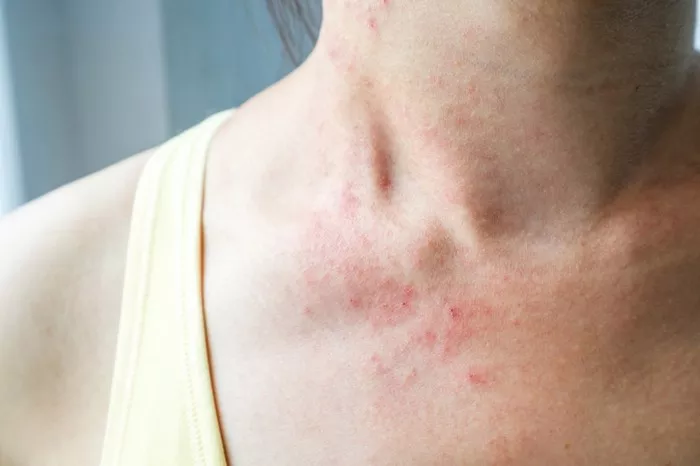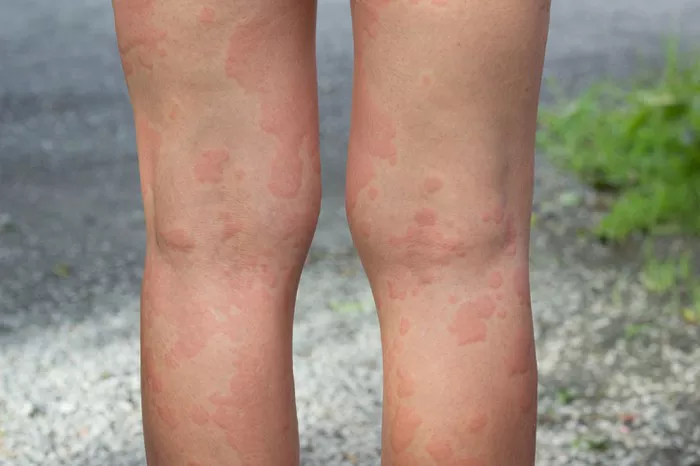Stress is an inevitable part of life, and its effects can manifest in various ways, including physical symptoms like hives. These sudden outbreaks of raised, red, itchy welts on the skin can be alarming and uncomfortable, often prompting individuals to seek relief and understanding of their underlying causes. While stress hives, also known as stress-induced urticaria, can appear anywhere on the body, certain areas are more commonly affected. Understanding where stress hives typically appear and why can provide valuable insights into managing stress and mitigating its impact on overall well-being.
Understanding Stress Hives
Before delving into where stress hives tend to appear, it’s essential to grasp their underlying mechanisms. Hives are a skin reaction triggered by the release of histamine, a compound produced by the body’s immune system in response to various stimuli. Stress is one such trigger, prompting the body to release stress hormones like cortisol, which can in turn stimulate the release of histamine.
Stress hives typically manifest as raised, red welts or bumps on the skin, often accompanied by itching, burning, or stinging sensations. These welts may vary in size and shape and can appear suddenly, disappearing within hours or persisting for days, depending on the individual’s response to stress and other factors.
Common Locations for Stress Hives
While stress hives can appear anywhere on the body, certain areas are more prone to outbreaks due to factors such as increased sensitivity or exposure to environmental triggers. The following are some of the common locations where stress hives tend to appear:
1. Face and Neck:
The face and neck are often highly sensitive areas, making them prime locations for stress hives to develop. These hives can appear as raised patches or individual welts, causing discomfort and self-consciousness. Stress-related facial hives may exacerbate feelings of anxiety or embarrassment, further contributing to stress levels.
2. Chest and Abdomen:
Stress hives frequently occur on the chest and abdomen, areas where the skin is relatively thin and prone to irritation. These welts may cluster together or spread out across the torso, causing itching and discomfort. The appearance of hives on the chest and abdomen can be particularly distressing, as they are more visible and may interfere with daily activities.
3. Arms and Legs:
The arms and legs are common sites for stress hives due to their extensive exposure to environmental stressors and physical exertion. Hives may appear on the arms and legs as individual welts or larger patches, often accompanied by itching or a burning sensation. The presence of hives on these areas can be disruptive, especially if they interfere with clothing or movement.
4. Hands and Feet:
Stress hives can also affect the hands and feet, although they may be less common in these areas compared to others. Hives on the hands and feet can be particularly uncomfortable, as they can interfere with fine motor skills and walking. The itching and swelling associated with hives on the hands and feet may exacerbate stress levels, creating a cycle of discomfort and anxiety.
5. Back and Shoulders:
The back and shoulders are susceptible to stress hives, especially in individuals who carry tension in these areas. Hives on the back and shoulders may present as raised welts or patches, causing itching and discomfort. These hives can be challenging to reach and treat, adding to the frustration and stress experienced by affected individuals.
Managing Stress Hives
While identifying common locations for stress hives is essential, effectively managing their symptoms requires addressing the underlying stressors contributing to their development. Strategies for managing stress and reducing the likelihood of hives outbreaks include:
1. Stress Management Techniques:
Engaging in stress-reducing activities such as mindfulness meditation, deep breathing exercises, yoga, or progressive muscle relaxation can help alleviate stress and prevent hives outbreaks.
2. Healthy Lifestyle Habits:
Prioritizing adequate sleep, regular exercise, and a balanced diet can support overall well-being and resilience to stress. Avoiding excessive caffeine, alcohol, and nicotine can also help minimize stress levels and reduce the risk of hives.
3. Seeking Support:
Talking to a trusted friend, family member, or mental health professional can provide valuable support and perspective during times of stress. Building a strong support network can help individuals cope with stress more effectively and reduce the likelihood of stress-related hives.
4. Identifying Triggers:
Keeping a journal to track stressors and potential triggers for hives outbreaks can help individuals identify patterns and take proactive steps to avoid or mitigate these triggers in the future.
5. Medical Treatment:
In some cases, stress hives may require medical intervention to manage symptoms effectively. Antihistamines, corticosteroids, and other medications may be prescribed to alleviate itching and inflammation associated with hives outbreaks.
Conclusion
Stress hives can be a distressing manifestation of the body’s response to psychological stressors, often appearing on sensitive areas of the skin. While stress hives can occur anywhere on the body, common locations include the face, neck, chest, abdomen, arms, legs, hands, feet, back, and shoulders. Understanding where stress hives typically appear and implementing strategies to manage stress effectively are crucial steps in minimizing their impact on overall well-being. By addressing underlying stressors and adopting healthy coping mechanisms, individuals can reduce the frequency and severity of stress-related hives outbreaks, promoting greater comfort and peace of mind.

























